- Clone
- A17199A (See other available formats)
- Regulatory Status
- RUO
- Other Names
- B7-2, B70, Ly-58
- Isotype
- Rat IgG2a, κ

-

LPS-stimulated (3 days) C57BL/6 mouse splenocytes were stained with anti-mouse CD86 (clone A17199A) PE/Dazzle™ 594 (filled histogram) or rat IgG2a, κ PE/Dazzle™ 594 isotype control (open histogram).
| Cat # | Size | Price | Quantity Check Availability | ||
|---|---|---|---|---|---|
| 159209 | 25 µg | $135.00 | |||
| 159210 | 100 µg | $340.00 | |||
CD86 is an 80 kD immunoglobulin superfamily member also known as B7-2, B70, and Ly-58. CD86 is expressed on activated B and T cells, macrophages, dendritic cells, and astrocytes. CD86, along with CD80, is a ligand of CD28 and CD152 (CTLA-4). CD86 is expressed earlier in the immune response than CD80. CD86 has also been shown to be involved in immunoglobulin class-switching and triggering of NK cell-mediated cytotoxicity. CD86 binds to CD28 to transduce co-stimulatory signals for T cell activation, proliferation, and cytokine production. CD86 can also bind to CD152, also known as CTLA-4, to deliver an inhibitory signal to T cells.
Product Details
- Verified Reactivity
- Mouse
- Antibody Type
- Monoclonal
- Host Species
- Rat
- Immunogen
- Recombinant mouse CD86
- Formulation
- Phosphate-buffered solution, pH 7.2, containing 0.09% sodium azide
- Preparation
- The antibody was purified by affinity chromatography and conjugated with PE/Dazzle™ 594 under optimal conditions.
- Concentration
- 0.2 mg/mL
- Storage & Handling
- The antibody solution should be stored undiluted between 2°C and 8°C, and protected from prolonged exposure to light. Do not freeze.
- Application
-
FC - Quality tested
- Recommended Usage
-
Each lot of this antibody is quality control tested by immunofluorescent staining with flow cytometric analysis. For flow cytometric staining, the suggested use of this reagent is ≤ 0.06 µg per million cells in 100 µL volume. It is recommended that the reagent be titrated for optimal performance for each application.
* PE/Dazzle™ 594 has a maximum excitation of 566 nm and a maximum emission of 610 nm. - Excitation Laser
-
Blue Laser (488 nm)
Green Laser (532 nm)/Yellow-Green Laser (561 nm)
- Application Notes
-
Clone A17199A is able to completely block the binding of clone PO3 to CD86.
- RRID
-
AB_3106037 (BioLegend Cat. No. 159209)
AB_3106037 (BioLegend Cat. No. 159210)
Antigen Details
- Structure
- Ig superfamily, 80 kD
- Distribution
-
B cells and T cells (upregulated upon activation), macrophages, dendritic cells, and astrocytes
- Function
- T cell costimulation, Ig class-switching, NK cell cytotoxicity
- Interaction
- Astrocytes, B cells, Dendritic cells, Macrophages, T cells, Tregs
- Ligand/Receptor
- CD28, CD152 (CTLA-4)
- Cell Type
- Astrocytes, B cells, Dendritic cells, Macrophages, T cells, Tregs
- Biology Area
- Cell Biology, Costimulatory Molecules, Immunology, Neuroscience, Neuroscience Cell Markers
- Molecular Family
- CD Molecules, Immune Checkpoint Receptors
- Antigen References
-
- Barclay A, et al. 1997. The Leukocyte Antigen FactsBook Academic Press.
- Hathcock KS, et al. 1993. Science 262:905.
- Freeman GJ, et al. 1993. Science 262:907.
- Carreno BM and Collins M. 2002. Annu. Rev. Immunol. 20:29.
- Gene ID
- 16182 View all products for this Gene ID
- UniProt
- View information about CD86 on UniProt.org
Other Formats
View All CD86 Reagents Request Custom Conjugation| Description | Clone | Applications |
|---|---|---|
| PE anti-mouse CD86 | A17199A | FC |
| Purified anti-mouse CD86 | A17199A | FC |
| Spark Red™ 718 anti-mouse CD86 | A17199A | FC |
| PE/Cyanine7 anti-mouse CD86 | A17199A | FC |
| PE/Dazzle™ 594 anti-mouse CD86 | A17199A | FC |
| PerCP/Cyanine5.5 anti-mouse CD86 | A17199A | FC |
| Alexa Fluor® 700 anti-mouse CD86 | A17199A | FC |
| APC anti-mouse CD86 | A17199A | FC |
| APC/Cyanine7 anti-mouse CD86 | A17199A | FC |
| FITC anti-mouse CD86 | A17199A | FC |
Compare Data Across All Formats
This data display is provided for general comparisons between formats.
Your actual data may vary due to variations in samples, target cells, instruments and their settings, staining conditions, and other factors.
If you need assistance with selecting the best format contact our expert technical support team.
-
PE anti-mouse CD86
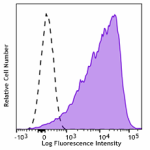
LPS-stimulated (3 days) C57BL/6 mouse splenocytes were stain... -
Purified anti-mouse CD86
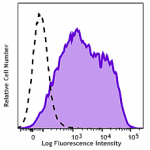
LPS-stimulated (3 days) C57BL/6 mouse splenocytes were stain... -
Spark Red™ 718 anti-mouse CD86
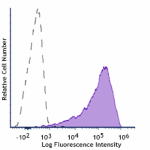
LPS-stimulated (3 days) C57BL/6 mouse splenocytes were stain... -
PE/Cyanine7 anti-mouse CD86
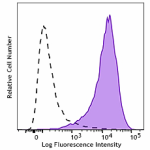
LPS-stimulated (3 days) C57BL/6 mouse splenocytes were stain... -
PE/Dazzle™ 594 anti-mouse CD86
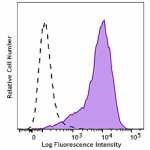
LPS-stimulated (3 days) C57BL/6 mouse splenocytes were stain... -
PerCP/Cyanine5.5 anti-mouse CD86
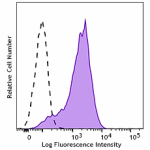
LPS-stimulated (3 days) C57BL/6 mouse splenocytes were stain... -
Alexa Fluor® 700 anti-mouse CD86
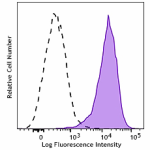
LPS-stimulated (3 days) C57BL/6 mouse splenocytes were stain... -
APC anti-mouse CD86
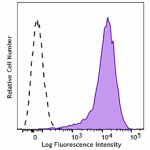
LPS-stimulated (3 days) C57BL/6 mouse splenocytes were stain... -
APC/Cyanine7 anti-mouse CD86
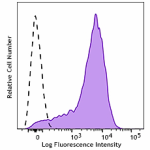
LPS-stimulated (3 days) C57BL/6 mouse splenocytes were stain... -
FITC anti-mouse CD86
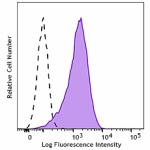
LPS-stimulated (3 days) C57BL/6 mouse splenocytes were stain...
